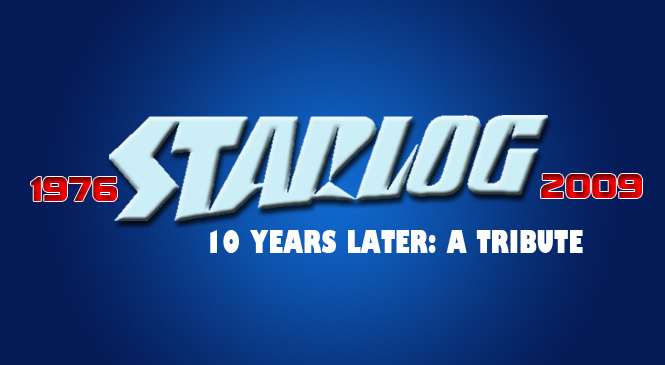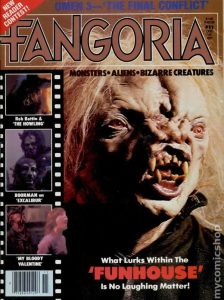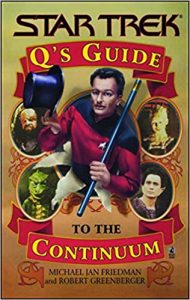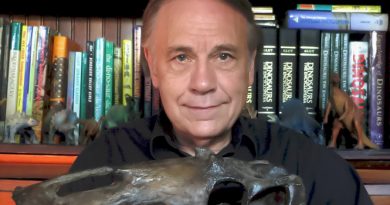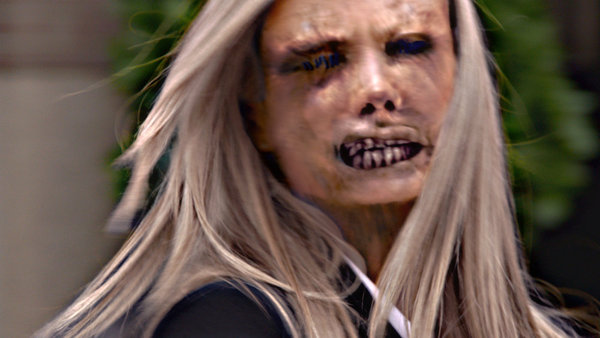Robert Greenberger: “STARLOG Gave Me Credibility”

Robert Greenberger sits in his office in Fulton, Maryland, a poster of his Shore Leave 33 roast event looming over his shoulder. He sits with a somewhat amused look behind a salt-and-pepper beard that probably was a little darker back in the days of which we speak, when he was just about to finish college and was thinking about what was coming next.
“It was the second semester of my senior year. It was time to start looking for jobs, and I sat there reviewing every book house, every magazine, every newspaper in the tri-state area that I thought I could get an entry-level job at, and among the four dozen places, I threw Starlog on. Because I’d been reading it since issue number one. They were based in New York. They were as good an option as any. And, well, gosh…out of four dozen applications, I got one interview. Starlog.”
His interview with publisher Kerry O’Quinn led to an offer to join sister publication Fangoria as managing editor in September of 1980, replacing Bob Woods, who moved over to sister publication Future Life, which had more of a scientific bent.
When Greenberger arrived on the scene, there weren’t too many other publications covering genre. Besides Starlog and Fangoria, there was Famous Monsters of Filmland and Cinefantastique in the United States, with Empire and Starburst in England.
In those days, even though Starlog had been going for four years already, it was still a small operation. “It was a very small house. Starlog had Howard Zimmerman and Susan Adamo, Fangoria had Bob Martin and me, Future Life had Bob Woods and Barbara Krasnoff. We had a four-man art department and an art director, and that was kind of it.”
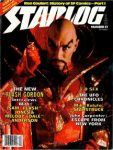
Together with a small administrative staff and Dave Hutchison on photos and Cinemagic, everyone was working on everything. Greenberger says everyone wore “as many hats as could fit”. Everyone pretty much wrote for the various titles, and each month they all managed to write the articles, collect the photos, get the words and images to the art department with layout instructions, and get the books out on time. And this was back in the days before the internet, when the book when to press via courier. “The last couple of days before the book had to leave, you know, it had to go. No digital files, nothing of the sort.”
This was back in the day of manual and electric typewriters. No computers. No flash drives. No saving to the cloud. The magazine would be laid out manually, and then sent to the printers for production. And no real sense that they were doing anything ground-breaking or high-impact. At least, not at first.
“Most of us grew up on Famous Monsters, and Castle Frankenstein, and the beginning of Cinefantastique, and so we recognized that we were preparing a magazine for a new generation. At that point, [Famous Monsters of Filmland publisher] Warren Publishing was on the ropes. We knew that they were rapidly dwindling, and we knew the day was gonna come that Famous Monsters was going to go and stop being relevant because the trend in horror films had changed, and they were really not happy about covering that stuff, where Fango embraced it.”
The fact that Fangoria was willing to push the envelope on what was acceptable for cover art — issue #12 featured the severed head of Betsy Palmer’s Mrs. Voohees from Friday the 13th Part II — may have caused some concern for the newsstands carrying the book, but “it sold,” Greenberger says. “We found our audience. Maybe by the time I left in January of 1984, we were that much older and that much more established, and some of the people reading us suddenly were getting film jobs. That’s where I started to pick up the sense that we were making an impact.”
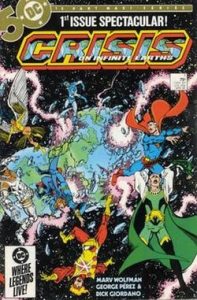
Greenberger’s work at the Starlog Group helped pave the way for him to work at DC Comics, where he started just before one of the most high-impact events of comics: Crisis on Infinite Earths.
“I had the unique benefit of being a New Yorker and being able to attend all the New York conventions through the nineteen-seventies, which meant that I got to meet a lot of the talent, that wave of talent that joined DC and Marvel in the nineteen seventies who were very accessible, wandering the aisles at the conventions, and you’d sit and talk, and I got to know them. So I knew who Len [Wein] and Marv [Wolfman], in particular, were. And then I started interviewing a lot of these guys for Starlog and then Comics Scene, and then I started being at conventions with these guys, so I see them here and there, and so I was on people’s radar, and I made it known that after they cancelled Comics Scene, the duties they were giving me at Starlog were not satisfactory, and it was time to move on.” Which is when, in December 1983, Dick Giordano offered him a position to help on Crisis and Who’s Who because “they had a comfort level with me.”
While at DC, Greenberger worked on titles including Suicide Squad and Star Trek, which opened the door to writing Trek novels for Pocket Books. His work in comics took him back and forth between DC and Marvel, and then eventually his work as an author took him to the point where he was one of the founders of Crazy 8 Press.
VIDEO: Bob Greenberger Talks About Thrilling Adventure Yarns
But it was his work at Starlog that helped open those other doors. “Starlog gave me the credibility because I created a magazine. I put it out, and people respected it. Here’s a guy in his early twenties running a magazine that’s nationally distributed. Not every guy applying for a job at DC or Marvel had that feather in his cap.” His time at Starlog gave him a certain skill set that he brought to bear at DC Comics: not only editorial skills, but also how to work with studios and publicists, celebrities and directors, as well as managing the different departments that had to coordinate together to get a book finished. He was able to translate that experience to his work at DC. “I understood the lingo.”
And while his time at Fangoria was brief — only issues nine through seventeen — Greenberger says it was still a valuable experience, even though it wasn’t a very long run before he moved over to Comics Scene and covered a topic that was much more comfortable for the more “traditional horror” fan. “But I’ve always had a fond spot in my heart because it was my first real job out of college.
“You always remember your first.”
![]()

